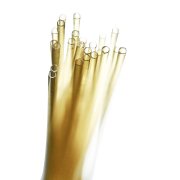Interventional catheters have heralded a new era in neurovascular medicine, transforming the way clinicians access and treat the brain and spinal cord's complex and fragile vasculature. These slim, pliable instruments are expertly crafted to traverse the body's intricate vascular maze, empowering medical professionals to diagnose and manage conditions such as aneurysms, arterial obstructions, and strokes through less invasive methods. The recent evolution in catheter technology, marked by advancements in material composition and the introduction of groundbreaking tip designs, has broadened the range of possible interventions while dramatically enhancing patient outcomes. These innovations have not only minimized procedural hazards and shortened recovery periods but have also established these cutting-edge catheters as vital components in contemporary neurovascular treatment. Their indispensability underscores the paramount importance of ongoing innovation in this specialized medical field.
The creation of neurovascular catheters is an intricate and nuanced process, requiring a comprehensive consideration of numerous factors to ensure their effectiveness and safety in sensitive medical interventions. This meticulous design process reflects a deep understanding of the clinical challenges and a commitment to precision and patient safety, hallmarking the catheters as products of high-end engineering and medical insight.
Material Selection: The choice of materials in catheter construction is paramount, as it directly influences the device's performance during neurovascular interventions. Flexibility is crucial for navigating the intricate and winding pathways of the cerebral vasculature, while strength is necessary to withstand the pressures encountered during insertion and operation. Biocompatibility is a non-negotiable attribute, ensuring that the catheter does not induce adverse reactions within the body. Radiopacity is another critical property, allowing for the catheter's visibility under imaging techniques such as fluoroscopy, thereby guiding precise placement. Together, these properties ensure that the catheter can safely reach and operate in the targeted area.
Diameter and Length: The diameter and length of neurovascular catheters are tailored to the specific requirements of the procedure. The diameter must be small enough to minimize invasiveness and patient discomfort, yet large enough to allow for the necessary tools and treatments to be delivered through the catheter. The length is determined by the distance from the insertion point to the treatment site, ensuring that the catheter can reach deep-seated areas within the brain without causing undue stress on surrounding tissues.
Tip Design: The design of the catheter's tip plays a critical role in its functionality. A well-designed tip facilitates ease of navigation through the vascular system, reducing the likelihood of vessel trauma. The tip must be soft enough to prevent damage to the vessel walls, yet firm enough to provide the necessary push and directionality. Innovations in tip design, including varying shapes and flexibility levels, have significantly enhanced the safety and efficacy of catheter-based neurovascular interventions.
Coatings: Specialized coatings on catheters further augment their performance. Hydrophilic coatings are commonly used to reduce friction, allowing the catheter to glide smoothly through blood vessels. Antimicrobial coatings are another vital feature, helping to prevent infections, a critical concern in any invasive procedure. These coatings not only improve the catheter's functionality but also contribute significantly to patient safety and the overall success of the intervention.
The evolution of interventional catheters represents a significant leap in neurovascular medicine. These sophisticated devices, with their advanced design and engineering, have opened new horizons in minimally invasive treatments, offering hope and improved quality of life to patients suffering from complex neurovascular conditions. The journey from concept to a fully functional catheter involves meticulous design considerations, rigorous testing, and a deep understanding of the clinical challenges faced by healthcare professionals.
This continuous innovation in catheter technology is crucial for advancing neurovascular care, offering improved treatment options, reducing procedural risks, and enhancing patient outcomes. It's a testament to the importance of cutting-edge technology and precision engineering in the medical field.
Ecopolymer's role in this field indicates a commitment to innovation and excellence in catheter design. The collaboration with medical device companies and the focus on enhancing safety and efficacy underscore the importance of these devices in modern neurovascular care. The development of these catheters, from concept to production, involves a deep understanding of clinical challenges and rigorous testing, ensuring that they meet the highest standards of quality and effectiveness.


Contact us
As a leading Contract Manufacturing Organization (CMO), we excel in custom medical catheters and membranes, from prototyping to mass production. Our focus: unparalleled R&D innovation and rigorous quality validation.




